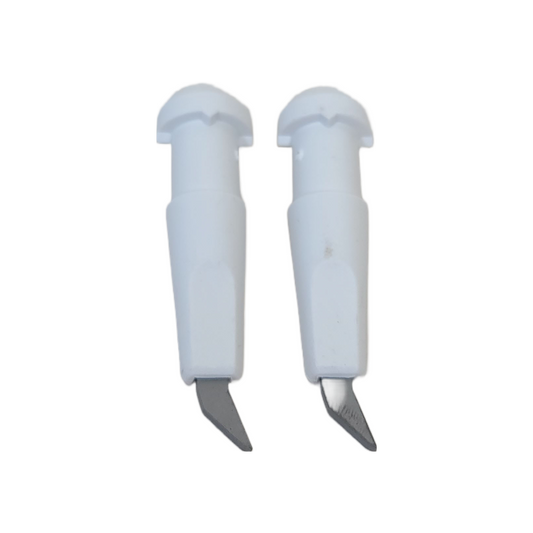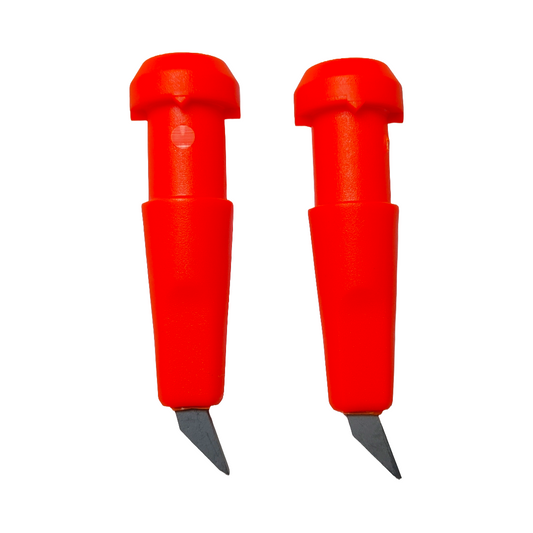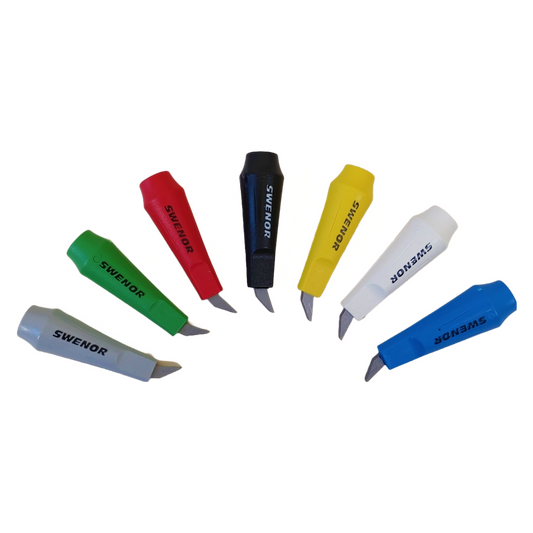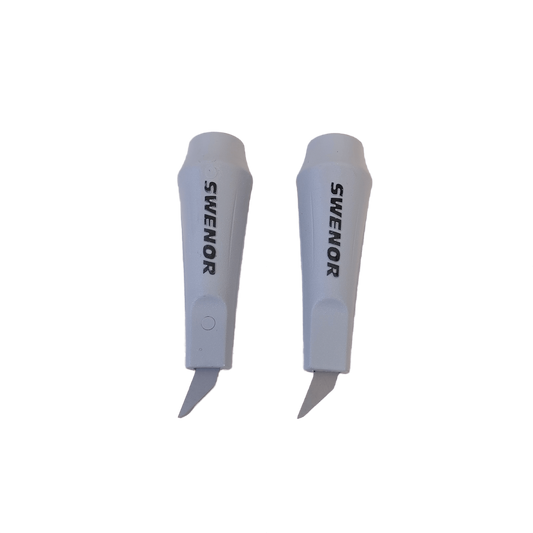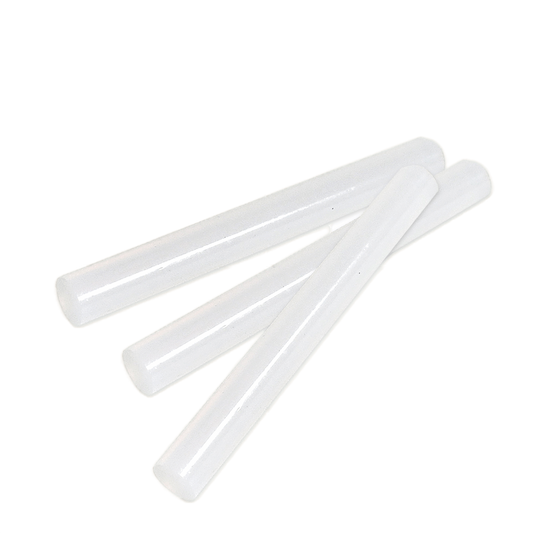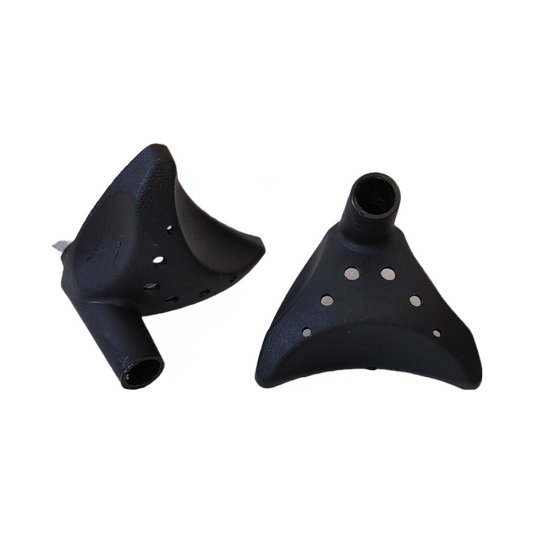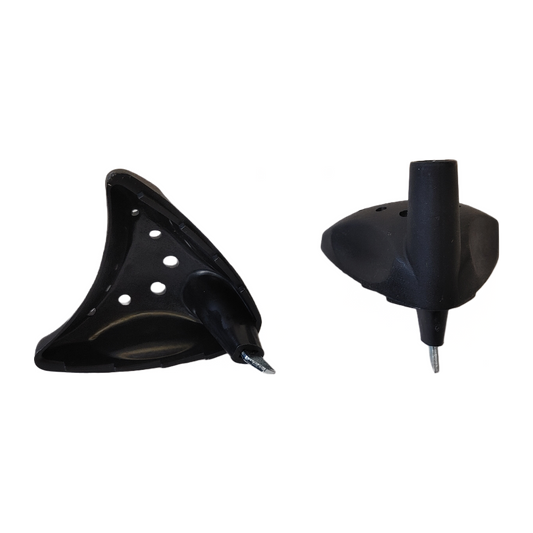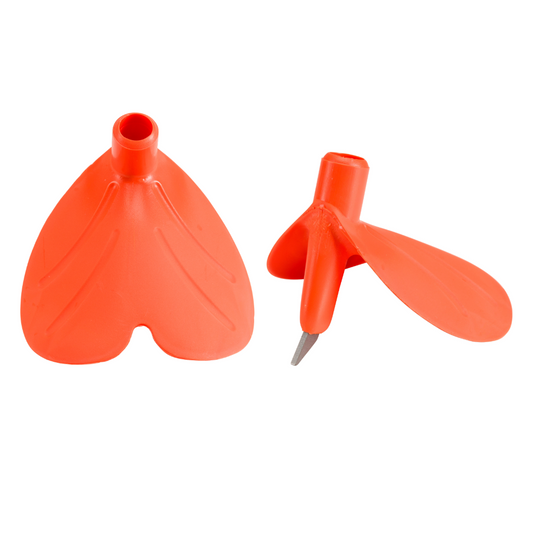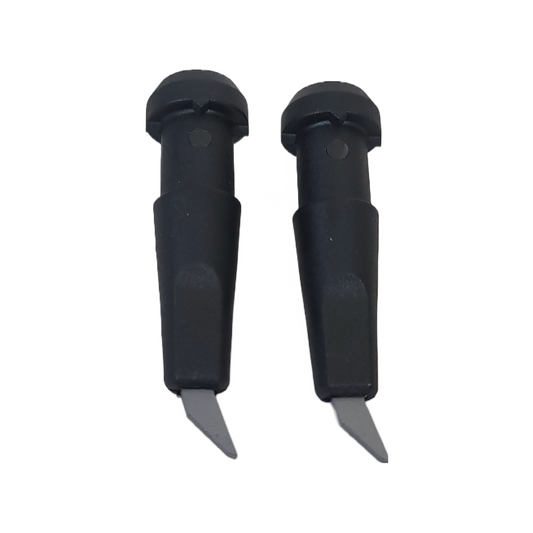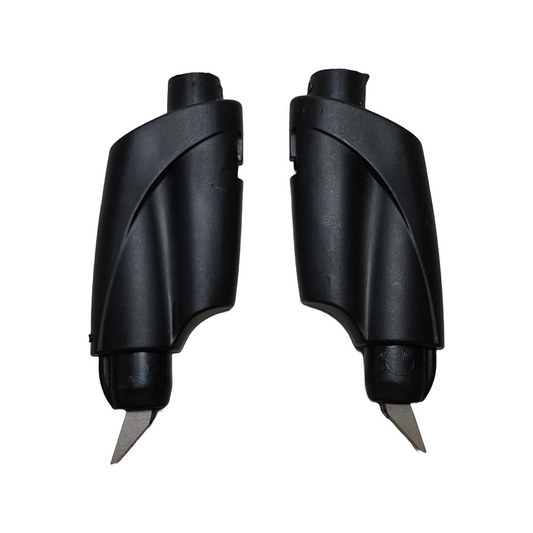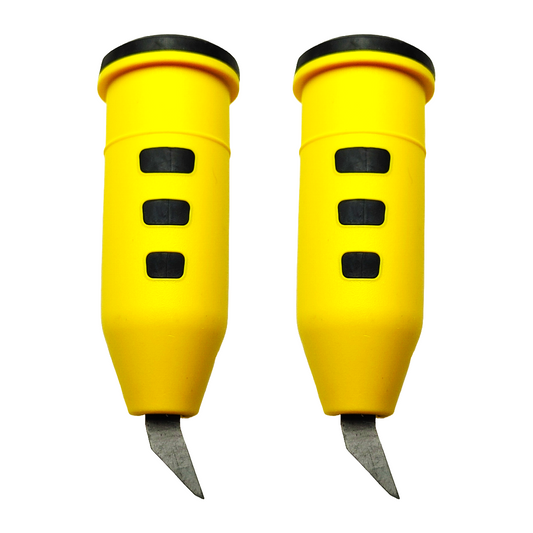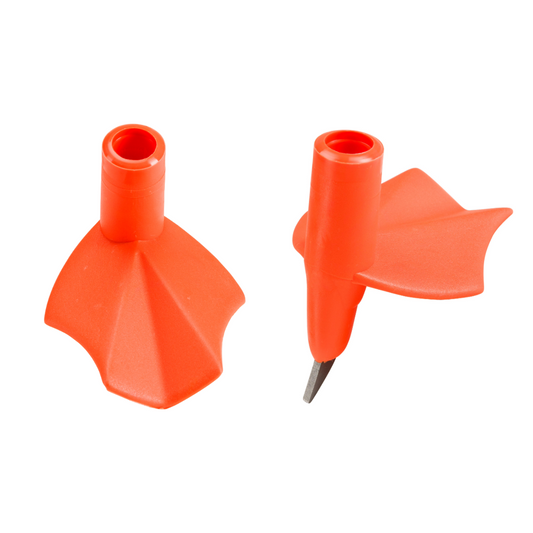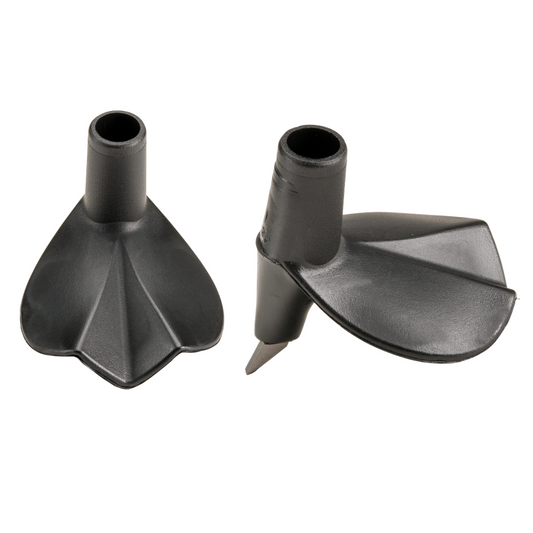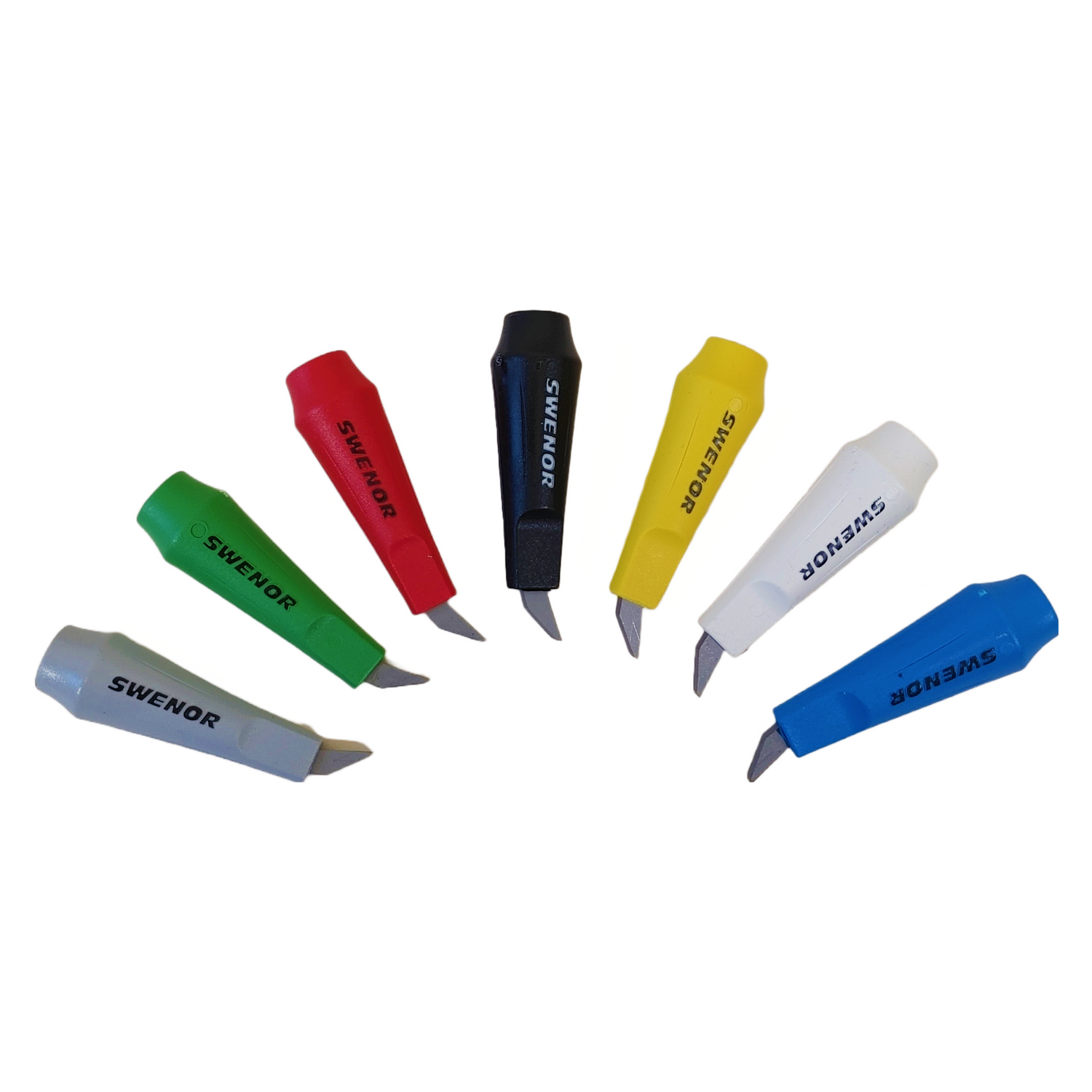
How To Replace Ski Pole Tips
Replacing ski pole tips is a straightforward process. This guide will show you how to switch from snow tips to rollerski ferrules, replace damaged tips, or switch to bigger baskets for soft snow conditions!
How-To Video
Step-by-Step
Items Needed:
- A new set of tips that are the correct diameter for your poles
- A Heat Gun
- Special ski pole glue
- A pair of work gloves
Step 1: Removing the Old Tips
Start by heating the old tips with a heat gun or dipping them in hot water for a few minutes. This softens the adhesive and makes it easier to remove the tips. Once heated, wear your gloves and pull the old tips off the poles.
Step 2: Preparing the Pole Shafts
Inspect the ends of the pole shafts for any leftover adhesive or debris. Clean them thoroughly to ensure a smooth surface for the new tips. Use your heat gun on the glue until it becomes transparent then apply a small quantity to the portion of the shaft that inserts into the tip.
Step 3: Heating the New Tips (If required)
If the new tips are tight, you can heat them slightly to expand the opening. Use the heat gun or dip them in hot water for a minute or two. If this doesn't do enough, you can use 120-grit sandpaper to reduce the diameter. If the tips fit loose, you can wrap one layer of electrical tape around the bottom of the shaft to act as a spacer and be sure to add extra glue!
Step 4: Installing the New Tips
Heat the glue you applied to the pole shaft until it's translucent. Slide the heated tips onto the pole shafts until you're sure they're fully inserted to the bottom. Eyeball the tips to ensure they're pointing in the same direction as the pole's handles.
Step 5: Securing the Ferrules
Allow the glue to cool and set. Double-check to ensure they are firmly attached and aligned correctly!
Products for How To Replace Ski Pole Tips
-
Canadian Wintersports Inc Bulk Rollerski Tips (Ferrules)
Regular price From $29.97 CADRegular priceUnit price / per$0.00 CADSale price From $29.97 CADCanadian Wintersports Inc Bulk Rollerski Tips (Ferrules)
Regular price From $29.97 CADRegular priceUnit price / per$0.00 CADSale price From $29.97 CADCanadian Wintersports Inc Bulk Rollerski Tips (Ferrules)
Regular price From $29.97 CADRegular priceUnit price / per$0.00 CADSale price From $29.97 CAD -
Swenor Rollerski Ferrules
Regular price $45.97 CADRegular priceUnit price / per$0.00 CADSale price $45.97 CADSwenor Rollerski Ferrules
Regular price $45.97 CADRegular priceUnit price / per$0.00 CADSale price $45.97 CADSwenor Rollerski Ferrules
Regular price $45.97 CADRegular priceUnit price / per$0.00 CADSale price $45.97 CAD -
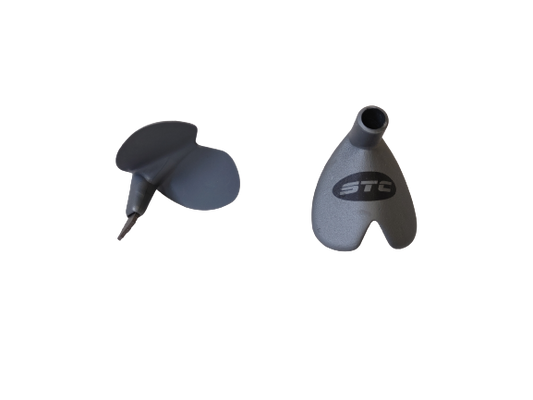
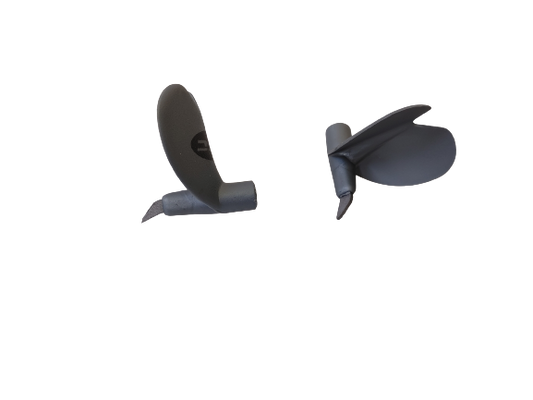 Save $10.00
Save $10.00STC Clearance 10mm Race Baskets
Regular price $9.95 CADRegular priceUnit price / per$19.95 CADSale price $9.95 CADSTC Clearance 10mm Race Baskets
Regular price $9.95 CADRegular priceUnit price / per$19.95 CADSale price $9.95 CADSTC Clearance 10mm Race Baskets
Regular price $9.95 CADRegular priceUnit price / per$19.95 CADSale price $9.95 CADSale -
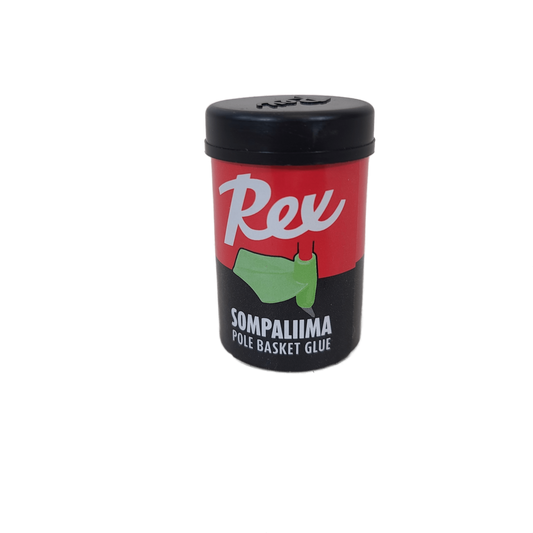 Save $20.00
Save $20.00Rex Pole Basket Glue
Regular price $9.96 CADRegular priceUnit price / per$29.96 CADSale price $9.96 CADSale -
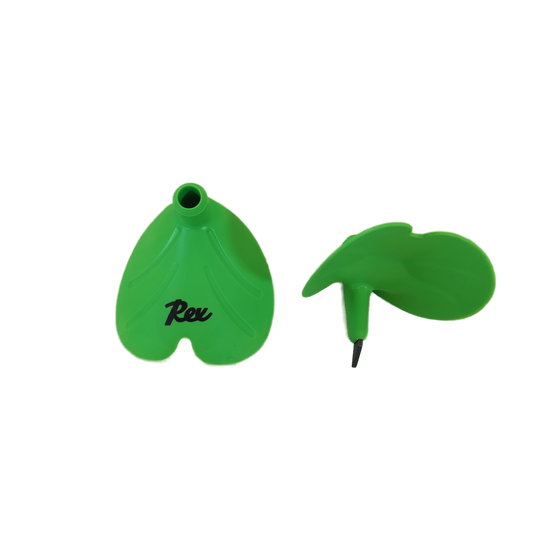 Save $11.99
Save $11.99Rex Rx Wide Baskets CLEARANCE
Regular price $27.96 CADRegular priceUnit price / per$39.95 CADSale price $27.96 CADRex Rx Wide Baskets CLEARANCE
Regular price $27.96 CADRegular priceUnit price / per$39.95 CADSale price $27.96 CADRex Rx Wide Baskets CLEARANCE
Regular price $27.96 CADRegular priceUnit price / per$39.95 CADSale price $27.96 CADSale -
Canadian Wintersports Inc Hot Melt Glue Sticks
Regular price $9.97 CADRegular priceUnit price / per$0.00 CADSale price $9.97 CAD -
Canadian Wintersports Inc Clearance 10mm Wide Baskets
Regular price $12.95 CADRegular priceUnit price / per$19.95 CADSale price $12.95 CADSold out -
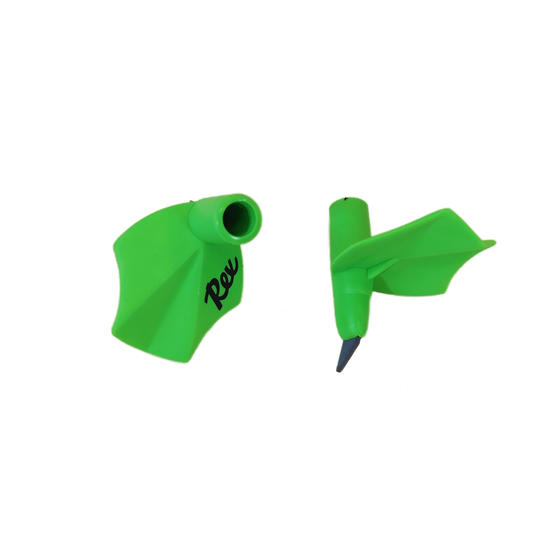 Save $9.99
Save $9.99Rex Rx Power Baskets 8,5 mm CLEARANCE
Regular price $22.96 CADRegular priceUnit price / per$32.95 CADSale price $22.96 CADSale -
Peltonen Rx Wide Baskets
Regular price $39.96 CADRegular priceUnit price / per$0.00 CADSale price $39.96 CADPeltonen Rx Wide Baskets
Regular price $39.96 CADRegular priceUnit price / per$0.00 CADSale price $39.96 CADPeltonen Rx Wide Baskets
Regular price $39.96 CADRegular priceUnit price / per$0.00 CADSale price $39.96 CAD -
Canadian Wintersports Inc Rollerski Ferrules (Non-Standard Sizes)
Regular price $18.95 CADRegular priceUnit price / per$0.00 CADSale price $18.95 CADCanadian Wintersports Inc Rollerski Ferrules (Non-Standard Sizes)
Regular price $18.95 CADRegular priceUnit price / per$0.00 CADSale price $18.95 CADCanadian Wintersports Inc Rollerski Ferrules (Non-Standard Sizes)
Regular price $18.95 CADRegular priceUnit price / per$0.00 CADSale price $18.95 CAD -
Swenor Rollerski Damping Ferrules
Regular price $70.00 CADRegular priceUnit price / per$0.00 CADSale price $70.00 CADSwenor Rollerski Damping Ferrules
Regular price $70.00 CADRegular priceUnit price / per$0.00 CADSale price $70.00 CADSwenor Rollerski Damping Ferrules
Regular price $70.00 CADRegular priceUnit price / per$0.00 CADSale price $70.00 CAD -
Peltonen Race Basket | 8.5mm
Regular price $39.96 CADRegular priceUnit price / per$0.00 CADSale price $39.96 CAD -
Peltonen Rx Sport Baskets 10 mm
Regular price $29.96 CADRegular priceUnit price / per$0.00 CADSale price $29.96 CAD
Ski Waxing Safety Measures
Safe Ski Waxing: Protect Yourself While Prepping Your Skis
Ski waxing is key to great performance on the snow, but it involves chemicals, heat, dust, and fumes that require careful handling. Prioritizing safety protects your health and ensures the waxing process is both effective and responsible.
Follow these essential safety practices every time you wax:
1. Maximize Ventilation: Fresh Air is Crucial 🌬️
- Why? Hot waxing, solvents, and brushing release fumes and fine dust particles that shouldn't be inhaled.
- Best Practice: Wax outdoors whenever possible.
-
Indoors: Ensure excellent air exchange.
- Work near open windows or doors.
- Use powerful exhaust fans (like range hoods or dedicated extraction systems) vented directly outside.
- Simple fans just circulating air within the room are not sufficient.
- Speak Up: If you're in a shared facility (like a team wax room or event) and ventilation seems poor, notify staff or organizers immediately. If you can strongly smell fumes or wax, ventilation isn't adequate.
2. Protect Your Lungs: Use a Respirator 😷
-
Why? Waxing generates harmful airborne particles and fumes from multiple sources:
- Smoke/fumes from hot waxing irons or machines.
- Dust from scraping and brushing wax.
- Vapors from evaporating solvents in liquid waxes and cleaners.
- Dust from fleece/wool application methods.
- Fumes from heating grip waxes and klisters.
-
Action: Wear a respirator suitable for both particulates (dust) and organic vapors (fumes/solvents).
- Look for respirators with P100 particulate filters combined with organic vapor cartridges.
- Ensure a proper fit. Facial hair can prevent a good seal.
- Replace filters and cartridges according to the manufacturer's recommendations or when you notice smell/taste breakthrough or increased breathing resistance.
3. Protect Your Eyes: Wear Safety Glasses 👓
- Why? Dust, flying wax particles, and potential splashes from cleaners can irritate or injure your eyes.
- Action: Always wear safety glasses or goggles. A full-face respirator also provides eye protection.
4. Protect Your Skin: Wear Gloves 🧤
- Why? Waxes and solvents contain chemicals that can be absorbed through the skin or cause irritation.
- Action: Wear chemical-resistant gloves (nitrile gloves are a common and effective choice). This keeps your hands clean and prevents direct skin contact with potentially harmful substances.
5. Maintain a Safe Wax Room Environment 🚫
- Control Access: Only those actively involved in waxing should be in the immediate waxing area to minimize exposure for others.
- No Food or Drink: Never eat, drink, smoke, or store food in the waxing area. This prevents accidental ingestion of harmful residues.
- Cleanliness: Keep your workspace tidy. Clean up spills immediately and manage wax scrapings (see next point).
6. Handle Wax Waste Responsibly ♻️
- Why? Wax shavings and dust contain the same chemicals you're protecting yourself from during application. Proper disposal protects the environment and prevents contamination.
-
Action:
- Collect all wax shavings, dust, and used cleaning materials (paper towels, rags).
- Place them promptly into a sealed plastic bag or designated waste container.
- Dispose of according to local regulations. (Note: Regulations for fluorinated wax disposal might be stricter in some areas – check local rules).
7. Control Your Iron Temperature 🔥
- Why? Overheating wax creates significantly more fumes and can damage your ski base.
- Action: Always use the wax manufacturer's recommended temperature for your specific wax. Don't guess!
8. Handle Cleaners & Solvents with Extra Care 🧪
- Why? Base cleaners and liquid waxes often contain volatile organic compounds (VOCs) that are easily inhaled and can be flammable.
-
Action:
- Use solvents and cleaners sparingly.
- Ensure maximum ventilation when applying them.
- Keep containers sealed when not in use.
- Crucially: Keep solvents far away from heat sources like your waxing iron, space heaters, or open flames.
Your Health Comes First!
By consistently following these safety protocols, you protect yourself from potential respiratory issues, skin irritation, and other health effects. Safe waxing allows you to focus on getting the best performance from your skis and fully enjoy your time on the snow.

